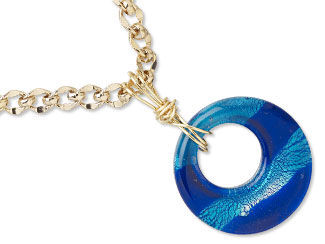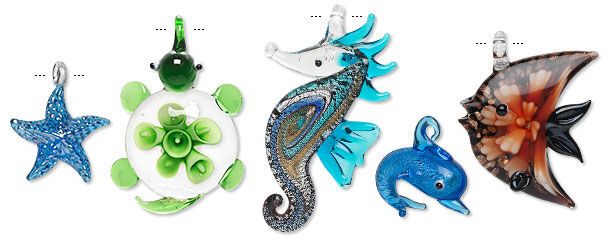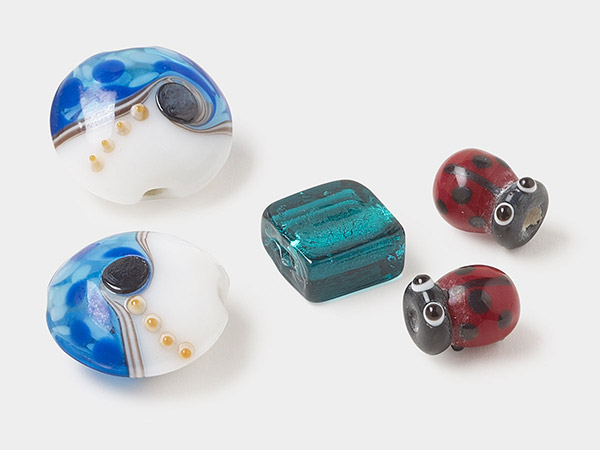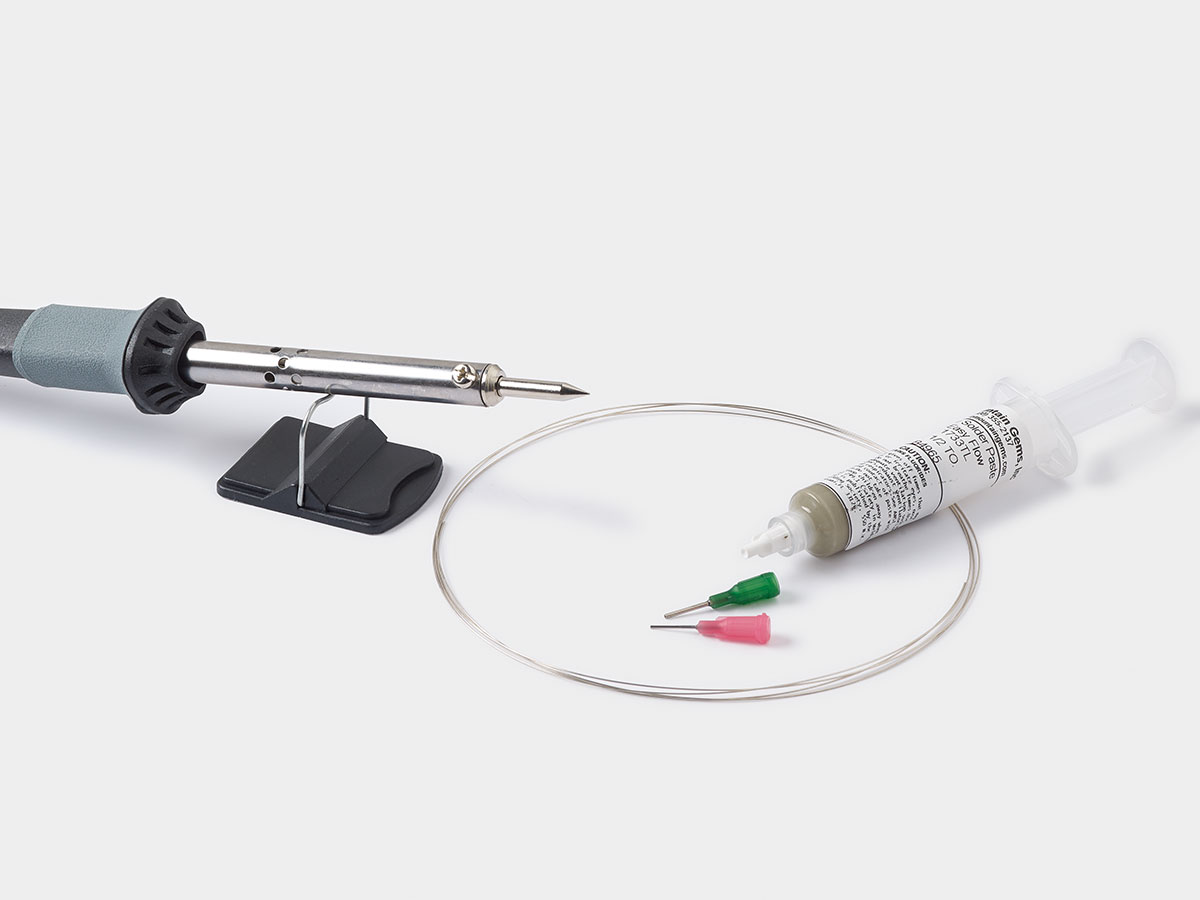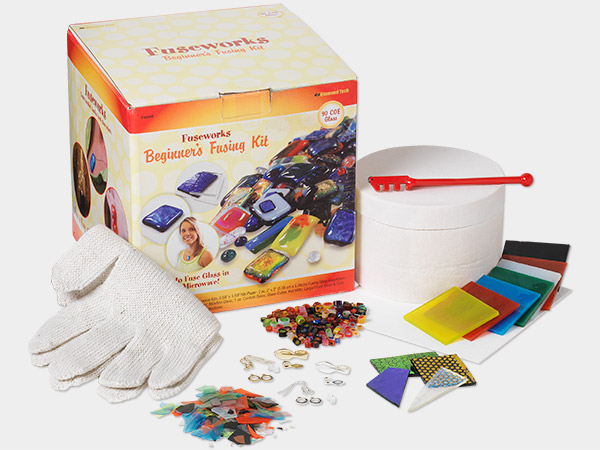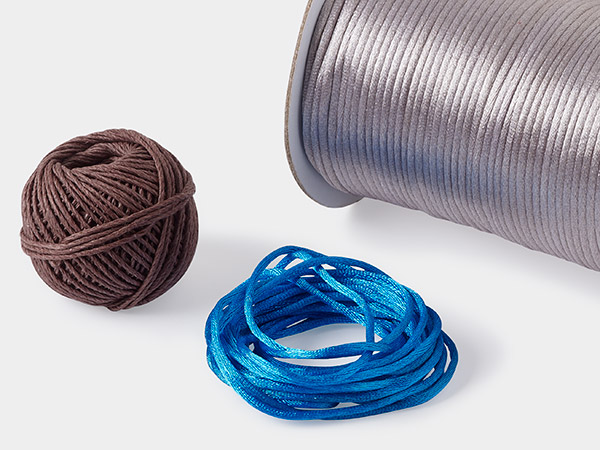How Lampwork Glass Pendants are Made
Lampwork beads, pendants and other jewelry-making components are created using fire and steel. Tubes and rods of colorful glass are transformed using a torch and metal tools in the complex and delicate process of lampworking (also called "flameworking" or "torchworking"'). While modern glass artists use gas-fueled flame torches, this kind of glasswork was originally done over an oil lamp and was termed "lampwork glass" and the process of creating it was called "lampworking."
Lampworking and glassblowing are very different techniques, although both are ancient and both involve fire. Glassblowing involves pushing air into the center of a blob of molten glass to create a hollow shape, while lampworking involves wrapping molten glass around a steel rod to create a solid shape with a stringing hole.
Lampwork glass is one of the few forms of glass art that can be done in the home.
Lampwork Glass Supplies
The basic tools include the glass torch--a flame which runs on propane--tubes of colorful glass, steel or soapstone shaping tools (called "marvers") and metal rods used to wrap the glass and provide a stringing hole. These rods are made of steel and coated with a kaolin (clay-like) substance called bead release, found in lampwork supply kits or craft stores. The clay coating around the steel rod enables glassworker to take the bead off the rod after it's formed. (Store-bought lampwork glass beads may occasionally include a powdery substance in the bag or on the bead. That's the remnants of the bead release.)
Glass for lampwork beads and components is made out of silica (the same material as computer chips) combined with other materials. Glass was first created about 6,000 years ago in Mesopotamia and the technology of glassmaking spread around the world along trade routes. Due to its malleable nature when hot, glass has been a popular material for making both useful and beautiful creations using a wide variety of techniques--including lampworking.
Some techniques of lampworking have been practiced since ancient times, yet only became a widely practiced technique in Murano, Italy, during the 1300s. It spread to Bohemia (part of the modern Czech Republic) and became part of the talented glassworking industry. From Bohemia, master glassworkers spread their knowledge, training apprentices from all over the world.
Modern lampwork glass comes in a number of different varieties. One is soda-lime glass, which blends silica sand with soda (sodium oxide) and lime (calcium oxide). Soda-lime glass has been manufactured for hundreds of years. Another is borosilicate glass, a blend of silica and boron oxide first developed in the late 1800s as advances in technology allowed for creating higher temperatures. Some lampworkers still use lead glass, which replaces some of the lime with the addition of lead, lowering the melting temperature needed for working the glass and allowing for a wider spectrum of intense colors.
The glass is heated to a soft, molten state and then wound around the coated wire. It is molded into desired shapes using hand tools and steel or soapstone marvers. While the bead is steadily turned over the flame, fine rods are used to "paint" the glass bead with designs and textures--such as the dots on "bumpy beads." After cooling slowly in a kiln, the bead is removed from the wire rod, leaving a bead stringing hole.
How a Lampwork Glass Seahorse is Made
Fire and steel combine with colorful sand to create beautiful glass sea life pendants and drops, as master craftsman practice their skills in the ancient art of lampwork glass. The lampwork glass artists who created these pendants shared images of their process.
Instructions
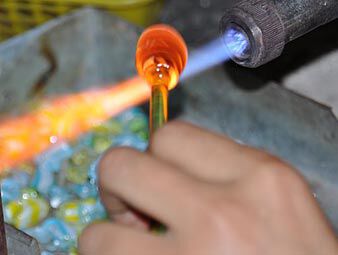
First, a shapeless mass of glass (called a ''gob'' or a ''gather'') is attached to the end of a solid glass rod, resembling a dipper in a jar of thick honey. These lampwork artisans get their colored glass locally, in China, creating the colors they want or need. The glass art created by these artists is often called ''Liuli''--an ancient Chinese word meaning ''glass'' that is used in the present day to refer to colored crystal glass created by hand using historical techniques.
The solid glass is then heated, twined with patterns and colors and stretched to create long ovals. These ovals end up serving as the bodies of the seahorses and fish.
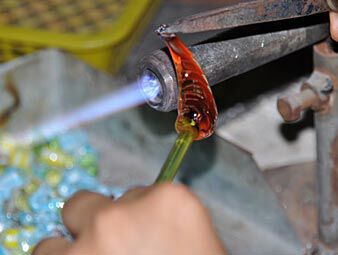
They are curved, flattened and otherwise shaped by pressing them against steel and graphite tools called ''marvers'', which come in a variety of forms.
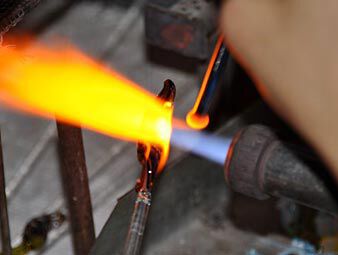
After the ovals are formed, they are flattened and shaped into fish or seahorse bodies.
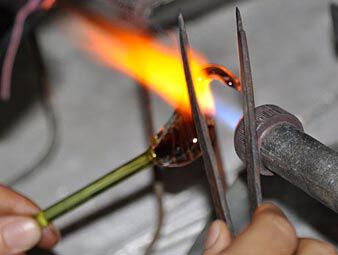
Additional torch work is used to elongate the glass, pulling it into the shape of tails.
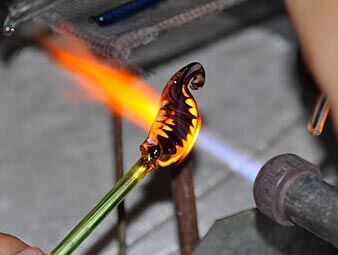
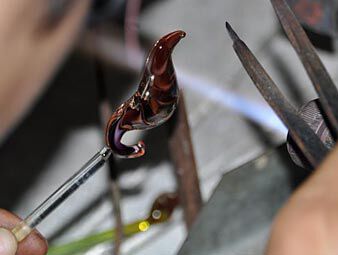
Colored glass is added to the fish to create tailfins, and the other end of the seahorse is pulled into a long and graceful neck
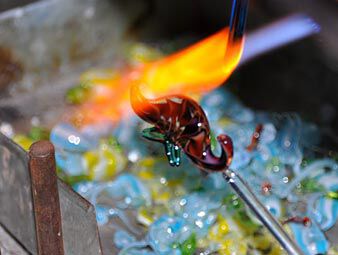
Colored glass is added to the fish to create tailfins, and the other end of the seahorse is pulled into a long and graceful neck
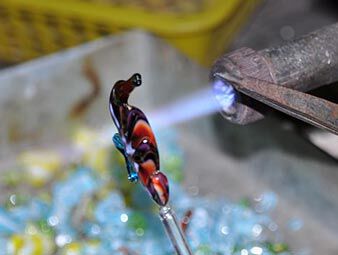
Additional colored glass is daubed onto the fish to create top and bottom fins, and onto the seahorse to create its backfins
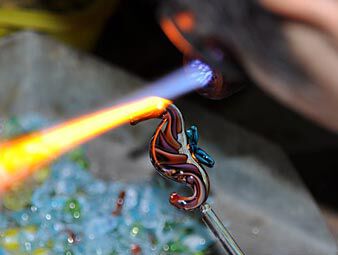
Colored glass is added too to create the lips and the colored iris and black pupil of the eye.
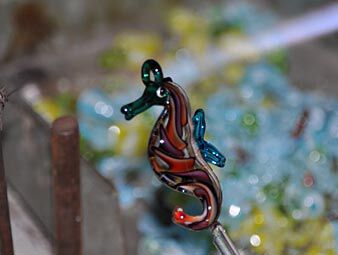
The final addition is using a narrow glass rod to add a top loop to the fish and seahorses, making them easy to hang
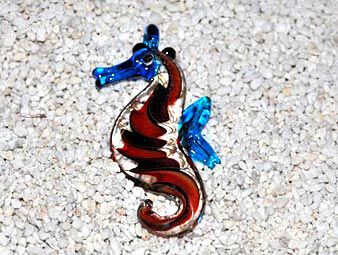
After cooling, the final product is washed and inspected. Voila! Lampworked glass tropical fish and colorful seahorses.
Have a question regarding this project? Email Customer Service.
Copyright Permissions
All works of authorship (articles, videos, tutorials and other creative works) are from the Fire Mountain Gems and Beads® Collection, and permission to copy is granted for non-commercial educational purposes only. All other reproduction requires written permission. For more information, please email copyrightpermission@firemtn.com.

